I remember being in college in the late 2000s learning about weather forecasting. My classmates and I would hand draw maps with current weather systems, then look at satellite data to help paint a picture of what would happen in the coming hours and days.
NOAA’s weather satellites were effective back then, but compared to the ones we have in orbit today, the difference is night and day. As a broadcast meteorologist, I have used the data they provide to communicate vital information and advanced warnings to billions of people across the United States and even the Caribbean when threatening weather conditions develop.
And when GOES-U launches June 25 atop a SpaceX Falcon Heavy rocket, it will complement NOAA’s GOES-R weather satellite constellation, adding to the capabilities of its siblings and placing greater emphasis on space weather.
NOAA’s Geostationary Operational Environmental Satellites (GOES) are not new; they have provided scientists with a constant stream of data and images from space since 1975. But over the decades, technological advances and lessons learned from every satellite launched so far have contributed to significant improvements in instruments and products available with more recent models.
The newest constellation in the GOES family began in November 2016 when its first of four satellites, GOES-R, was launched into space. At that time I was working at KEYT-TV in Santa Barbara, California and had the opportunity to edit an exclusive feature as preliminary data became available to scientists across the United States.
I interviewed the team of forecasters at the National Weather Service (NWS) Los Angeles office to find out how the variety of images and observations was useful in each of their different roles. Meteorologists talked about how it was incorporated into their forecasts and used to issue alerts to warn the public of severe weather, and also how incredible it was compared to anything they used before.
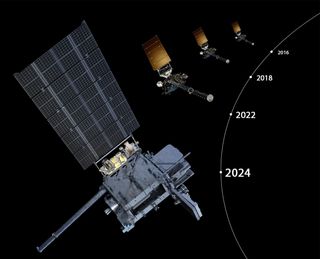
More than seven years later, with three of the four satellites in the series orbiting Earth, scientists and researchers say they are pleased with the results and how advanced technology has changed the game.
“I think it really lived up to its hype when it came to storm forecasting. Meteorologists can see convection changing almost in real time, giving them a better idea of storm development and severity , which allows for better warnings,” John Cintineo, a researcher at NOAA’s National Severe Storms Laboratory (NSSL) told Space.com in an email.
“Not only does the GOES-R series provide observations where radar coverage is lacking, but it often provides a robust signal ahead of radar, such as when a storm strengthens or weakens. I am sure there There have been many other improvements in environmental forecasting and monitoring over the past decade, but this is where I have most clearly seen improvement,” Cintineo said.
In addition to helping predict severe thunderstorms, each satellite collected images and data on heavy rains that could trigger flooding, detected low clouds and fog as they formed, and made significant improvements forecasts and services used during hurricane season.
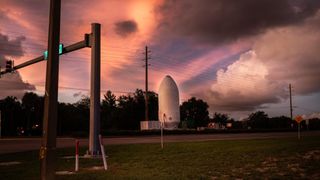
“GOES provides our hurricane forecasters with faster, more accurate and more detailed data critical to estimating storm intensity, including cloud top cooling, convective structures, specific storm characteristics, the eye of a hurricane, wind speed aloft, and lightning activity,” Ken Graham, director of NOAA’s National Weather Service (NWS), told Space.com in an email.
Instruments such as the Advanced Baseline Imager (ABI) has three times more spectral channels, four times the image quality and five times the imaging speed than previous GOES satellites. THE Geostationary Lightning Mapper (GLM) is the first of its kind in orbit on the GOES-R series that allows scientists to view 24/7 lightning strikes and impacts that contact the ground and from cloud to cloud.
“GOES-U and the GOES-R series of satellites provide scientists and forecasters with weather monitoring of the entire Western Hemisphere, at unprecedented spatial and temporal scales,” Cintineo said. “Data from these satellites helps researchers develop new tools and methods to solve problems such as lightning prediction, identification of sea spray (sea spray is dangerous for sailors), severe weather warnings and The precise estimation of cloud movement GOES-R instruments also contributes to improving the forecasts of global and regional numerical weather models, thanks to better data assimilation.
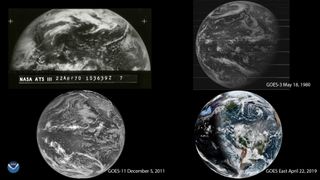
Although similar to its siblings, GOES-U will be unique because it will feature improvements to its instruments derived from what scientists have learned from the three currently in orbit.
But what will set GOES-U apart from the rest will be a new sensor on board, the Compact Coronagraph (CCOR), which will monitor weather outside Earth’s atmosphere, keeping an eye out for space weather events that could impact our planet. .
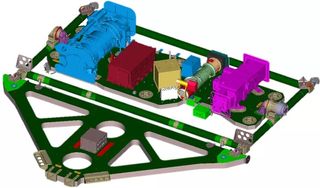
“This will be the first near real-time operational coronagraph that we will have access to. This is a big step forward for us because until now we have always depended on a research coronagraph instrument on a spacecraft launched there has been long enough,” Rob Steenburgh, a space scientist at NOAA’s Space Weather Prediction Center (SWPC), told Space.com over the phone.
“So it’s exciting because I won’t have to wait now for the data to be uploaded, because sometimes the current coronagraph images are delayed. Sometimes we wait up to four or eight hours, and every hour counts when you’re We have to deal with coronal mass ejections (CMEs) which sometimes arrive on Earth and give us big geomagnetic storms like the ones we had last month.
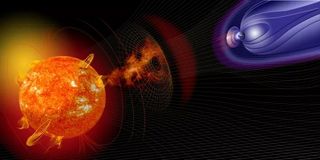
Before forecasting space weather, Steenburgh was a meteorologist for Earth weather, and says the way these next-generation satellites have revolutionized the way scientists can make forecasts is significant. He says technological advances since the 1980s have provided Earth and space weather forecasters with the tools to build confidence and improve forecast accuracy.
“Probably one of the biggest changes was the introduction of Doppler weather radar, which blew me away. What a big step forward in terms of capabilities, and so I felt like I was part of the golden era of meteorology,” Steenburgh said. “I got into space weather around 2005 and have been fortunate to witness a very similar evolution in this field, which is just astounding. When I started, I had three models digital media with which I worked more or less regularly.
“Now I have more than 16 and observation platforms that I never imagined, with data quality in terms of temporal and spatial resolution beyond my wildest dreams at first. I’m lucky to live in another golden era,” Steenburgh added. .